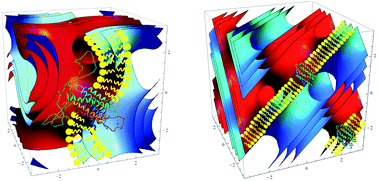Incorporation of the dopamine D2L receptor and bacteriorhodopsin within bicontinuous cubic lipid phases. 1. Relevance to in mesocrystallization of integral membraneproteins in monoolein systems†
Abstract
The

* Corresponding authors
a
CSIRO Molecular and Health Technologies (CMHT), Private Bag 10, Clayton South MDC, VIC, Australia
E-mail:
calum.drummond@csiro.au
b CSIRO Molecular and Health Technologies (CMHT), 343 Royal Parade, Parkville, VIC, Australia
c CSIRO Molecular and Health Technologies (CMHT), PO Box 184, North Ryde, NSW, Australia
d CSIRO Materials Science and Engineering (CMSE), Private Bag 33, Clayton South MDC, VIC, Australia
The

 Please wait while we load your content...
Something went wrong. Try again?
Please wait while we load your content...
Something went wrong. Try again?
C. E. Conn, C. Darmanin, S. M. Sagnella, X. Mulet, T. L. Greaves, J. N. Varghese and C. J. Drummond, Soft Matter, 2010, 6, 4828 DOI: 10.1039/C0SM00463D
To request permission to reproduce material from this article, please go to the Copyright Clearance Center request page.
If you are an author contributing to an RSC publication, you do not need to request permission provided correct acknowledgement is given.
If you are the author of this article, you do not need to request permission to reproduce figures and diagrams provided correct acknowledgement is given. If you want to reproduce the whole article in a third-party publication (excluding your thesis/dissertation for which permission is not required) please go to the Copyright Clearance Center request page.
Read more about how to correctly acknowledge RSC content.
 Fetching data from CrossRef.
Fetching data from CrossRef.
This may take some time to load.
Loading related content
